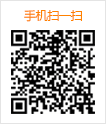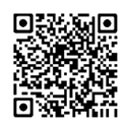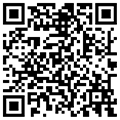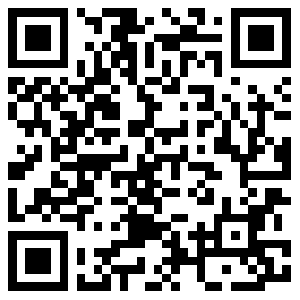美国甲状腺协会妊娠期和产后甲状腺疾病的诊断和治疗指南
2018年07月29日 5208人阅读 返回文章列表
Guidelines of the American Thyroid Association
for the Diagnosis and Management of Thyroid Disease
During Pregnancy and Postpartum
美国甲状腺协会妊娠期和产后甲状腺疾病的诊断和治疗指南
The American Thyroid Association Taskforce on Thyroid Disease During Pregnancy and Postpartum海南医学院第一附属医院内分泌科王新军
美国甲状腺协会妊娠期和产后甲状腺疾病特别工作组
Translated by Wang Xinjun Binzhou people’s hospital,Binzhou Medical College
王新军译 滨州医学院附属滨州市人民医院
INTRODUCTION
前言
Pregnancy has a profound impact on the thyroid glandand thyroid function. The gland increases 10% in size during pregnancy in iodine-replete countries and by 20%–40% in areas of iodine deficiency. Production of thyroxine(T4) and triiodothyronine (T3) increases by 50%, along with a 50% increase in the daily iodine requirement. These physiological changes may result in hypothyroidism in the later stages of pregnancy in iodine-deficient women who were euthyroid in the first trimester.
妊娠对甲状腺和甲状腺功能具有明显影响。在点充足地区,妊娠期间甲状腺腺体大小增加10%,在碘缺乏地区,增加约20%~40%。甲状腺素(T4)和三碘甲状腺原氨酸(T3)增加50%,每天碘需求量增加50%。这些生理的变化可能导致妊娠前三个月甲状腺功能正常的碘缺乏妇女在妊娠后期发生甲减。
The range of thyrotropin (TSH), under the impact of placental human chorionic gonadotropin (hCG), is decreased throughout pregnancy with the lower normal TSH level in the first trimester being poorly defined and an upper limit of 2.5 mIU/L. Ten percent to 20% of all pregnant women in the first trimester of pregnancy are thyroid peroxidase (TPO) or thyroglobulin (Tg) antibody positive and euthyroid.
促甲状腺激素(TSH)的范围在胎盘绒毛膜促性腺激素(hCG)的影响下,在整个妊娠期间均下降,在妊娠前三个月正常低限但尚未充分界定,上限为2.5 MIU/ L。妊娠前三个月大约10%到20%的妇女甲状腺过氧化物酶(TPO)或甲状腺球蛋白(Tg)抗体阳性且甲状腺功能正常。
Sixteen percent of the women who are euthyroid and positive for TPO or Tg antibody in the first trimester will develop a TSH that exceeds 4.0 mIU/L by the third trimester, and 33%–50% of women who are positive for TPO or Tg antibody in the first trimester will develop postpartum thyroiditis. In essence, pregnancy is a stress test for the thyroid, resulting in hypothyroidism in women with limited thyroidal reserve or iodine deficiency, and postpartum thyroiditis in women with underlying Hashimoto’s disease who were euthyroid prior to conception.
妊娠前三个月甲状腺功能正常TPO或TG抗体阳性的妇女中,约16%在妊娠后三个月其促甲状腺激素会超过4.0 mIU/ L,妊娠前三个月TPO或Tg抗体阳性的妇女有33%~50%会发生产后甲状腺炎。从本质上讲,妊娠是甲状腺的应激试验,在甲状腺功能储备有限或碘缺乏的妇女会发生甲状腺功能减退,而在怀孕前甲状腺功能正常但有潜在桥本甲状腺疾病的妇女会发生产后甲状腺炎。
Knowledge regarding the interaction between the thyroid and pregnancy/the postpartum period is advancing at a
rapid pace. Only recently has a TSH of 2.5 mIU/L been accepted as the upper limit of normal for TSH in the first trimester. This has important implications in regards to interpretation of the literature as well as a critical impact for the clinical diagnosis of hypothyroidism.
关于甲状腺和妊娠/产后期相互作用的只是进展很快。直到最近,促甲状腺激素 2.5 MIU/ L,为怀孕前三个月TSH的正常上限才被接受。这对于文献的解释及甲状腺功能减退的临床诊断的关键影响具有重要意义。
Although it is well accepted that overt hypothyroidism and overt hyperthyroidism have a deleterious impact on pregnancy, studies are now focusing on the potential impact of subclinical hypothyroidism and subclinical hyperthyroidism on maternal and fetal health, the association between miscarriage and preterm delivery in euthyroid women positive for TPO and/or Tg antibody, and the prevalence and long-term impact of postpartum thyroiditis. Recently completed prospective randomized studies have begun to produce critically needed data on the impact of treating thyroid disease on the mother, fetus, and the future intellect of the unborn child.
虽然显性甲状腺功能减退和显性甲状腺功能亢进症对妊娠具有不利影响已被广泛接受,目前研究集中在亚临床甲状腺功能减退症和亚临床甲状腺功能亢进症对产妇和胎儿健康的潜在影响、在甲状腺功能正常TPO和/或Tg抗体阳性的妇女流产和早产之间的关系,产后甲状腺炎的流行病学和长期影响方面。最近完成的前瞻性随机研究已经开始给出关于治疗甲状腺疾病对母亲、胎儿的影响,未出生的孩子将来智力的影响方面急需的数据。
It is in this context that the American Thyroid Association (ATA) charged a task force with developing clinical guidelines on the diagnosis and treatment of thyroid disease during pregnancy and the postpartum. The task force consisted of international experts in the field of thyroid disease and pregnancy, and included representatives from the ATA, Asia and Oceania Thyroid Association, Latin American Thyroid Society, American College of Obstetricians and Gynecologists, and the Midwives Alliance of North America. Inclusion of thyroidologists, obstetricians, and midwives on the task force was essential to ensuring widespread acceptance and adoption of the developed guidelines.
正是在这种背景下,美国甲状腺协会(ATA)成立了一个特别工作组负责制定妊娠和产后甲状腺疾病诊断和治疗的临床指南。特别工作组由甲状腺疾病和妊娠领域的国际专家、ATA的代表、亚洲和大洋洲甲状腺协会的代表、拉丁美洲甲状腺协会的代表、美国妇产科学院的代表和北美助产士联盟的代表组成。工作组包括甲状腺疾病专家、妇产科医生和助产士以确保新指南被广泛的接受和采用。
& RECOMMENDATION 1
Trimester-specific reference ranges for TSH, as defined in populations with optimal iodine intake, should be applied. Level B-USPSTF
1 应该应用最佳的碘摄入量的人群中妊娠早、中、晚期特定的TSH参考值范围。B级证据
& RECOMMENDATION 2
If trimester-specific reference ranges for TSH are not available in the laboratory, the following reference ranges are recommended: first trimester, 0.1–2.5 mIU/L; second trimester, 0.2–3.0 mIU/L; third trimester, 0.3–3.0 mIU/L. Level I-USPSTF
2
如果实验室无妊娠早、中、晚期特异的TSH具体参考值范围,建议参考以下参考值范围:妊娠前三月0.1~2.5 mIU/ L;妊娠中期三个月,0.2-3.0 MIU / L;孕晚期三个月,0.3-3.0 MIU/ L。I级证据
& RECOMMENDATION 3
The optimal method to assess serum FT4 during pregnancy is measurement of T4 in the dialysate or ultrafiltrate of
serum samples employing on-line extraction/liquid chromatography/tandem mass spectrometry (LC/MS/MS). Level A-USPSTF
3
在怀孕期间评估血清FT4的最佳方法,是用在线萃取/液相色谱/串联质谱(LC / MS /MS)测量透析或超滤血清样本的T4。A级证据
& RECOMMENDATION 4
If FT4 measurement by LC/MS/MS is not available, clinicians should use whichever measure or estimate of FT4 is available in their laboratory, being aware of the limitations of each method. Serum TSH is a more accurate indication of thyroid status in pregnancy than any of these alternative methods. Level A-USPSTF
4
如果没有条件用LC / MS/ MS测定FT4,临床医生应该使用其他方法或用他们实验室中的方法估计FT4的值,但应知道每种方法的局限性。和这些指标相比,血清TSH是妊娠期间甲状腺功能状态更准确的一个指标。 A级证据
& RECOMMENDATION 5
In view of the wide variation in the results of FT4 assays, method-specific and trimester-specific reference ranges of serum FT4 are required. Level B-USPSTF
5
鉴于FT4的检测结果差异很大,必需制定方法特异性的和妊娠早、中、晚期特异性的参考值范围。B级证据
& RECOMMENDATION 6
OH should be treated in pregnancy. This includes women with a TSH concentration above the trimester-specific reference interval with a decreased FT4, and all women with a TSH concentration above 10.0 mIU/L irrespective of the level of FT4. Level A-USPSTF
6
在怀孕期间明显的甲状腺功能减退症(OH)应该治疗。这包括TSH浓度高于妊娠特异性参考值范围及FT4水平下降的妇女和不论FT4浓度如何但TSH浓度高于10.0 mIU/ L的妇女。A级证据
& RECOMMENDATION 7
Isolated hypothyroxinemia should not be treated in pregnancy. Level C-USPSTF
妊娠期间单纯的低甲状腺素血症不应该治疗。C级证据
& RECOMMENDATION 8
SCH has been associated with adverse maternal and fetal outcomes. However, due to the lack of randomized controlled trials there is insufficient evidence to recommend for or against universal LT4 treatment in TAb_ pregnant women with SCH. Level I-USPSTF
8
亚临床甲状腺功能减退症(SCH)与产妇和胎儿结局不利有关。然而,由于缺乏随机对照试验,尚无足够的证据建议对Tab—的SCH孕妇用或不用LT4治疗。 I级证据
& RECOMMENDATION 9
Women who are positive for TPOAb and have SCH should be treated with LT4. Level B-USPSTF
9
TPOAb阳性的SCH妇女应该用LT4治疗。 B级证据
& RECOMMENDATION 10
The recommended treatment of maternal hypothyroidism is with administration of oral LT4. It is strongly recommended not to use other thyroid preparations such as T3 or desiccated thyroid. Level A-USPSTF
10
甲状腺功能减退的孕妇建议口服LT4治疗。强烈建议不用其他甲状腺制剂如T3或干甲状腺治疗。A级证据
& RECOMMENDATION 11
The goal of LT4 treatment is to normalize maternal serum TSH values within the trimester-specific pregnancy reference range (first trimester, 0.1–2.5 mIU/L; second trimester, 0.2–3.0 mIU/L; third trimester, 0.3–3.0 mIU/L). Level A-USPSTF
11
LT4治疗的目标是使产妇血清TSH值保持在妊娠特异性的参考值范围正常值以内(头三个月0.1-2.5 mIU/ L;妊娠中三个月,0.2-3.0 mIU/ L;孕晚期三个月,0.3-3.0 mIU/ L)。
A级证据
& RECOMMENDATION 12
Women with SCH in pregnancy who are not initially treated should be monitored for progression to OH with a serum TSH and FT4 approximately every 4 weeks until 16–20 weeks gestation and at least once between 26 and 32 weeks gestation. This approach has not been prospectively studied. Level I-USPSTF
12
没有进行治疗的亚临床甲减孕妇应监测是否进展为明显的甲状腺功能减退症,16~20周前应每4周测定TSH和FT4,在孕26到32周之间至少测定一次。这种方法尚无前瞻性研究。 I级证据
& RECOMMENDATION 13
Treated hypothyroid patients (receiving LT4) who are newly pregnant should independently increase their dose of LT4 by *25%–30% upon a missed menstrual cycle or positive home pregnancy test and notify their caregiver promptly. One means of accomplishing this adjustment is to increase LT4 from once daily dosing to a total of nine doses per week (29% increase). Level B-USPSTF
13
正在接受治疗(LT4)的甲状腺功能低下的新怀孕患者一个月经周期后或妊娠试验阳性后应增加LT4剂量25%~30%,并及时通知他们的照护者。一种完成这种调整的方法是由LT4每日1次剂量增加到每周9次(增加29%)。 B级证据
& RECOMMENDATION 14
There exists great interindividual variability regarding the increased amount of T4 (or LT4) necessary to maintain a normal TSH throughout pregnancy, with some women requiring only 10%–20% increased dosing, while others may require as much as an 80% increase. The etiology of maternal hypothyroidism, as well as the preconception level of TSH, may provide insight into the magnitude of necessary LT4 increase. Clinicians should seek this information upon assessment of the patient after pregnancy is confirmed. Level A-USPSTF
14
为保持怀孕期间TSH正常,T4(或LT4)的增加量个体间变异很大,有些妇女仅需增加剂量10%~20%,而其他妇女可能需要增加了80%。孕妇甲状腺功能减退的病因,以及孕前TSH水平,可能影响LT4增加的量。临床医师应搜集这些信息以评估怀孕后患者的病情。 A级证据
& RECOMMENDATION 15
Treated hypothyroid patients (receiving LT4) who are planning pregnancy should have their dose adjusted by their provider in order to optimize serum TSH values to <2.5 mIU/L preconception. Lower preconception TSH values (within the nonpregnant reference range) reduce the risk of TSH elevation during the first trimester. Level B-USPSTF
15
正在治疗(LT4)的甲状腺功能低下的患者,如果计划怀孕应该在医师指导下调整剂量,使TSH值优化到<2.5MIU/ L。较低的TSH值(未孕的参考范围内)会减少妊娠前三个月TSH值升高的风险。B级证据
& RECOMMENDATION 16
In pregnant patients with treated hypothyroidism, maternal serum TSH should be monitored approximately every 4 weeks during the first half of pregnancy because further LT4 dose adjustments are often required. Level B-USPSTF
16
正在治疗的甲状腺功能减退症的孕妇,在怀孕的前半个时期应大约每4周检测一次TSH,因为往往需要进一步调整LT4的剂量。B级证据
& RECOMMENDATION 17
In pregnant patients with treated hypothyroidism, maternal TSH should be checked at least once between 26 and 32 weeks gestation. Level I-USPSTF
17
正在治疗的甲状腺功能减退症孕妇,在孕26和32周之间应至少检查一次TSH。 I级证据
& RECOMMENDATION 18
Following delivery, LT4 should be reduced to the patient’s preconception dose. Additional TSH testing should be performed at approximately 6 weeks postpartum. Level B-USPSTF
18
分娩后,LT4应减少到孕前剂量。应在产后约6周再次检测TSH值。B级证据
& RECOMMENDATION 19
In the care of women with adequately treated Hashimoto’s thyroiditis, no other maternal or fetal thyroid testing is recommended beyond measurement of maternal thyroid function (such as serial fetal ultrasounds, antenatal testing, and/or umbilical blood sampling) unless for other pregnancy circumstances. Level A-USPSTF
19
在已经适当治疗的桥本甲状腺炎妇女,不建议除检测母体甲状腺功能以外进行其他母体或胎儿甲状腺检测(如串行胎儿超声波检查,产前检测和/或脐带血采样),除非其他怀孕情况。 A级证据
& RECOMMENDATION 20
Euthyroid women (not receiving LT4) who are TAbt require monitoring for hypothyroidism during pregnancy. Serum TSH should be evaluated every 4 weeks during the first half of pregnancy and at least once between 26 and 32 weeks gestation. Level B-USPSTF
20
TAb+甲状腺功能正常的妇女(未服用LT4)在怀孕期间需要监测甲状腺功能减退。血清TSH在怀孕前一半时间应每4周评估一次,在26至32周至少评估一次。B级证据
& RECOMMENDATION 21
A single RCT has demonstrated a reduction in postpartum thyroiditis from selenium therapy. No subsequent trials have confirmed or refuted these findings. At present, selenium supplementation is not recommended for TPOAbt women during pregnancy. Level C-USPSTF
21
一项随机对照试验显示用硒治疗可减少产后甲状腺炎。没有后续试验证实或推翻这些结论。目前,不建议TPOAb+的妇女在怀孕期间补充硒。 C级证据
& RECOMMENDATION 22
In the presence of a suppressed serum TSH in the first trimester (TSH <0.1 mIU/L), a history and physical examination are indicated. FT4 measurements should be obtained in all patients. Measurement of TT3 and TRAb may be helpful in establishing a diagnosis of hyperthyroidism. Level B-USPSTF
22
如果在妊娠前3个月存在血清TSH抑制(TSH<0.1 MIU/ L),应该询问病史并进行体格检查。 所有患者应检测FT4。 检测TT3和TRAb或许有助于明确甲状腺功能亢进症的诊断。B级证据
& RECOMMENDATION 23
There is not enough evidence to recommend for or against the use of thyroid ultrasound in differentiating the cause of hyperthyroidism in pregnancy. Level I-USPSTF
23
有没有足够的证据支持或反对应用甲状腺超声鉴别孕妇的甲状腺功能亢进症。 I级证据
& RECOMMENDATION 24
Radioactive iodine (RAI) scanning or radioiodine uptake determination should not be performed in pregnancy. Level D-USPSTF
24
在怀孕期间不应进行放射性碘(RAI)扫描或放射性碘摄取测定。D级证据
& RECOMMENDATION 25
The appropriate management of women with gestational hyperthyroidism and hyperemesis gravidarum includes supportive therapy, management of dehydration, and hospitalization if needed. Level A-USPSTF
25
妊娠妇女甲状腺功能亢进症和妊娠剧吐的合适治疗包括支持治疗、补液,如果需要,可以住院治疗。 A级证据
& RECOMMENDATION 26
ATDs are not recommended for the management of gestational hyperthyroidism. Level D-USPSTF
妊娠甲状腺功能亢进症不建议用抗甲状腺药物治疗。 D级证据
& RECOMMENDATION 27
Thyrotoxic women should be rendered euthyroid before attempting pregnancy. Level A-USPSTF
27
甲亢妇女在计划怀孕前应该将甲状腺功能控制到正常。 A级证据
& RECOMMENDATION 28
PTU is preferred for the treatment of hyperthyroidism in the first trimester. Patients on MMI should be switched to PTU if pregnancy is confirmed in the first trimester. Following the first trimester, consideration should be given to switching to MMI. Level I-USPSTF
28
在妊娠前三个月,首选丙基硫氧嘧啶治疗甲亢。正在用甲巯咪唑治疗的患者如果确定怀孕,在前三个月应该改用丙基硫氧嘧啶。三个月后,应该考虑改回甲巯咪唑。I级证据
& RECOMMENDATION 29
A combination regimen of LT4 and an ATD should not be used in pregnancy, except in the rare situation of fetal hyperthyroidism. Level D-USPSTF
29
在怀孕期间不应该联用LT4和抗甲状腺药物,除非在极少数胎儿甲状腺功能亢进症时。D级证据
& RECOMMENDATION 30
In women being treated with ATDs in pregnancy, FT4 and TSH should be monitored approximately every 2–6 weeks. The primary goal is a serum FT4 at or moderately above the normal reference range. Level B-USPSTF
30
在怀孕期间用抗甲状腺药物进行治疗的妇女,应该每2~6周检测一次FT4和TSH。主要目标是血清FT4在正常或略高于正常参考值范围。 B级证据
& RECOMMENDATION 31
Thyroidectomy in pregnancy is rarely indicated. If required, the optimal time for thyroidectomy is in the second
trimester. Level A-USPSTF
31
在怀孕期间很少建议甲状腺切除术。如果需要,甲状腺切除术的最佳时间是在妊娠中期。 A级证据
& RECOMMENDATION 32
If the patient has a past or present history of Graves’ disease, a maternal serum determination of TRAb should be obtained at 20–24 weeks gestation. Level B-USPSTF
32
如果病人有Graves病或曾患Graves病,应该在妊娠20~24周检测孕妇的血清TRAb。 B级证据
& RECOMMENDATION 33
Fetal surveillance with serial ultrasounds should be performed in women who have uncontrolled hyperthyroidism and/or women with high TRAb levels (greater than three times the upper limit of normal). A consultation with an experienced obstetrician or maternal–fetal medicine specialist is optimal. Such monitoring may include ultrasound for heart rate, growth, amniotic fluid volume, and fetal goiter. Level I-USPSTF
33
如果孕妇的甲亢未控制和/或孕妇的TRAb较高(高于三倍正常值上限),则应该用串行超声进行胎儿监测。最好咨询经验丰富的产科医生或母婴专家。这种超声监测可以包括心率、生长状况、羊水量和胎儿甲状腺肿大。 I级证据
& RECOMMENDATION 34
Cordocentesis should be used in extremely rare circumstances and performed in an appropriate setting. It may occasionally be of use when fetal goiter is detected in women taking ATDs to help determine whether the fetus is hyperthyroid or hypothyroid. Level I-USPSTF
34
在极少数情况下,可以在合适的机构进行脐带血采样。这在孕妇服用抗甲状腺药物胎儿甲状腺中大时或许有用,以辅助确定胎儿是否甲状腺功能亢进或甲状腺功能减退。 I级证据
& RECOMMENDATION 35
MMI in doses up to 20–30 mg/d is safe for lactating mothers and their infants. PTU at doses up to 300mg/d is a second-line agent due to concerns about severe hepatotoxicity. ATDs should be administered following a feeding and in divided doses. Level A-USPSTF
35
MMI的剂量在20-30mg/ d对哺乳期的妇女和婴儿是安全的。因为严重的肝毒性,PTU 300mg/ d是二线药物。抗甲状腺药物应该分次服用,并在喂食后给药。 A级证据
& RECOMMENDATION 36
All pregnant and lactating women should ingest a minimum of 250 mg iodine daily. Level A-USPSTF
36
所有孕妇和哺乳期妇女每天最低应摄取250 mg碘。 A级证据
& RECOMMENDATION 37
To achieve a total of 250 mg iodine ingestion daily in North America all women who are planning to be pregnancy or are pregnant or breastfeeding should supplement their diet with a daily oral supplement that contains 150 mg of iodine. This is optimally delivered in the form of potassium iodide because kelp and other forms of seaweed do not provide a consistent delivery of daily iodide. Level B-USPSTF
37
在北美,要达到250mg的碘摄入量,所有计划怀孕或已经怀孕或哺乳期的妇女应该在每天饮食中口服补充150mg碘。最好补充碘化钾,因为海带和其他紫菜中的碘含量并不稳定。 B级证据
& RECOMMENDATION 38
In areas of the world outside of North America, strategies for ensuring adequate iodine intake during preconception, pregnancy, and lactation should vary according to regional dietary patterns and availability of iodized salt. Level A-USPSTF
38
在北美的世界其他地区,在孕前、怀孕和哺乳期为确保足够的碘摄入量应根据不同区域的饮食习惯和是否有碘盐而制定补碘方案。A级证据
& RECOMMENDATION 39
Pharmacologic doses of iodine exposure during pregnancy should be avoided, except in preparation for thyroid surgery for Graves’ disease. Clinicians should carefully weigh the risks and benefits when ordering medications or diagnostic tests that will result in high iodine exposure. Level C-USPSTF
39
在怀孕期间应该避免服用药理剂量的碘,除非在Graves'病甲状腺手术的准备时。临床医师在为患者处方可能高碘的药物或进行诊断试验时应仔细权衡风险和收益。C级证据
& RECOMMENDATION 40
Sustained iodine intake from diet and dietary supplements exceeding 500–1100 mg daily should be avoided due to concerns about the potential for fetal hypothyroidism. Level C-USPSTF
40
应该避免饮食和膳食补充剂碘摄入量持续每日超过500~1100mg,因为这可能导致胎儿潜在的甲状腺功能减退。C级证据
& RECOMMENDATION 41
There is insufficient evidence to recommend for or against screening all women for anti-thyroid antibodies in the first trimester of pregnancy. Level I-USPSTF
41
没有足够的证据支持或反对在妊娠前三个月对所有妇女筛选查抗甲状腺抗体。
I级证据
& RECOMMENDATION 42
There is insufficient evidence to recommend for or against screening for anti-thyroid antibodies, or treating in the first trimester of pregnancy with LT4 or IVIG, in euthyroid women with sporadic or recurrent abortion or in women undergoing in vitro fertilization (IVF). Level I-USPSTF
42
没有足够的证据支持或反对筛查抗甲状腺抗体,或在甲状腺功能正常的妇女、偶发或复发性流产的妇女或体外受精(IVF)的妇女在妊娠前三个月用LT4或静脉免疫球蛋白治疗。 I级证据
& RECOMMENDATION 43
There is insufficient evidence to recommend for or against LT4 therapy in TAbt euthyroid women during pregnancy. Level I-USPSTF
43
没有足够的证据支持或反对在怀孕期间用LT4治疗TAb+甲状腺功能正常的妇女。I级证据
& RECOMMENDATION 44
There is insufficient evidence to recommend for or against LT4 therapy in euthyroid TAbt women undergoing assisted reproduction technologies. Level I-USPSTF
44
没有足够的证据支持或反对用LT4治疗甲状腺功能正常TAb+接受辅助生育技术的妇女。 I级证据
& RECOMMENDATION 45
There is insufficient evidence to recommend for or against screening for anti-thyroid antibodies in the first trimester of pregnancy, or treating TAbt euthyroid women with LT4, to prevent preterm delivery. Level I-USPSTF
45
没有足够的证据支持或反对在妊娠前三个月筛查抗甲状腺抗体,或用LT4 治疗TAb+甲状腺功能正常的妇女防止早产。 I级证据
& RECOMMENDATION 46
The optimal diagnostic strategy for thyroid nodules detected during pregnancy is based on risk stratification. All women should have the following: a complete history and clinical examination, serum TSH testing, and ultrasound of the neck. Level A-USPSTF
46
在妊娠期间检测到的甲状腺结节最佳的诊断策略是进行危险分层。所有妇女应当有以下内容:完整的病史和临床检查,血清TSH检测和颈部超声。 A级证据
& RECOMMENDATION 47
The utility of measuring calcitonin in pregnant women with thyroid nodules is unknown. Level I-USPSTF
47
甲状腺结节的孕妇测量降钙素是否有用仍不清楚。 I级证据
& RECOMMENDATION 48
Thyroid or lymph node FNA confers no additional risks to a pregnancy. Level A-USPSTF
48
孕妇进行甲状腺或淋巴结活检无额外危险。 A级证据
& RECOMMENDATION 49
Thyroid nodules discovered during pregnancy that have suspicious ultrasound features, as delineated by the 2009 ATA guidelines, should be considered for FNA. In instances in which nodules are likely benign, FNA may be deferred until after delivery based on patients’ preference. Level I-USPSTF
49
在怀孕期间发现的甲状腺结节如果根据2009年ATA指南其超声特点的可疑,应考虑细针穿刺活检。在可能是良性结节的病例,细针穿刺活检可根据患者的意愿推迟到分娩后进行。I级证据
& RECOMMENDATION 50
The use of radioiodine imaging and/or uptake determination or therapeutic dosing is contraindicated during pregnancy. Inadvertent use of radioiodine prior to 12 weeks of gestation does not appear to damage the fetal thyroid. Level A-USPSTF
50
在怀孕期间使用碘成像和/或碘摄取决定治疗剂量是禁忌的。在怀孕前12周前不慎使用放射性碘不会损害胎儿甲状腺。A级证据
& RECOMMENDATION 51
Because the prognosis of women with well-differentiated thyroid cancer identified but not treated during pregnancy is similar to that of nonpregnant patients, surgery may be generally deferred until postpartum. Level B-USPSTF
51 由于患分化良好的甲状腺癌的妇女在怀孕期间不治疗与非妊娠妇女的预后类似,所以手术一般可以推迟到产后。 B级证据
& RECOMMENDATION 52
The impact of pregnancy on women with medullary carcinoma is unknown. Surgery is recommended during pregnancy in the presence of a large primary tumor or extensive lymph node metastases. Level I-USPSTF
52
妊娠对妇女髓样癌的影响仍不清楚。妊娠期间如患大的原发性肿瘤或广泛淋巴结转移,建议手术。 I级证据
& RECOMMENDATION 53
Surgery for thyroid carcinoma during the second trimester of pregnancy has not been demonstrated to be associated with increased maternal or fetal risk. Level B-USPSTF
53
在妊娠中期进行甲状腺癌手术未见与产妇或胎儿的风险增加相关。 B级证据
& RECOMMENDATION 54
Pregnant women with thyroid nodules that are read as benign on FNA cytology do not require surgery during pregnancy except in cases of rapid nodule growth and/or if severe compressive symptoms develop. Postpartum, nodules should be managed according to the 2009 ATA guidelines. Level B-USPSTF
54
患甲状腺结节的孕妇如果细针穿刺细胞学检查显示为良性,除非结节生长较快和/或出现严重的压迫症状,一般不需手术。产后,甲状腺结节应根据2009年的ATA指南处理。 B级证据
& RECOMMENDATION 55
When a decision has been made to defer surgery for welldifferentiated thyroid carcinoma until after delivery, neck ultrasounds should be performed during each trimester to assess for rapid tumor growth, which may indicate the need for surgery. Level I-USPSTF
55
对于分化良好的甲状腺癌如果决定将手术推迟到产后进行,应该每3个月进行一次超声检查,以评估肿瘤的生长速度,如果肿瘤快速生长,则是需要手术的指证。 I级证据
& RECOMMENDATION 56
Surgery in women with well-differentiated thyroid carcinoma may be deferred until postpartum without adversely affecting the patient’s prognosis. However, if substantial growth of the well-differentiated thyroid carcinoma occurs or the emergence of lymph node metastases prior to midgestation occurs, then surgery is recommended. Level B-USPSTF
56
在分化良好的甲状腺癌妇女手术可以推迟到产后进行而对病人的预后无不良影响。但是,如果分化良好的甲状腺癌生长较快,或在孕中期出现淋巴结转移,则建议手术。B级证据
& RECOMMENDATION 57
Thyroid hormone therapy may be considered in pregnant women who have deferred surgery for welldifferentiated thyroid carcinoma until postpartum. The goal of LT4 therapy is a serum TSH level of 0.1–1.5mIU/L. Level I-USPSTF
57
患分化良好的甲状腺癌的妇女如果推迟手术可以考虑甲状腺激素治疗一直到产后。LT4治疗的目标是血清TSH水平0.1~1.5mIU/ L。I级证据
& RECOMMENDATION 58
Pregnant patients with an FNA sample that is suspicious for thyroid cancer do not require surgery while pregnant except in cases of rapid nodular growth and/or the appearance of lymph node metastases. Thyroid hormone therapy is not recommended. Level I-USPSTF
58
怀孕的患者如果细针穿刺活检显示可疑甲状腺癌,怀孕期间不需手术,除非结节快速增长和/或出现淋巴结转移。不建议甲状腺激素治疗。 I级证据
& RECOMMENDATION 59
The preconception TSH goal in women with DTC, which is determined by risk stratification, should be maintained during pregnancy. TSH should be monitored approximately every 4 weeks until 16–20 weeks of gestation and once between 26 and 32 weeks of gestation. Level B-USPSTF
59
患分化型甲状腺癌的妇女孕前TSH的目标根据危险分层决定,且应在怀孕期间维持这一目标。在妊娠16~20周前应该大约每4周测定TSH一次,在妊娠26和32周之间应该检测一次。B级证据
& RECOMMENDATION 60
There is no evidence that previous exposure to radioiodine affects the outcomes of subsequent pregnancies and offspring. Pregnancy should be deferred for 6 months following RAI treatment. LT4 dosing should be stabilized following RAI treatment before pregnancy is attempted. Level B-USPSTF
60
没有证据表明曾接触放射性碘影响以后怀孕和子女的结局。RAI治疗后怀孕应推迟到6个月以后。RAI后,在计划怀孕前应将LT4剂量调整稳定。B级证据
& RECOMMENDATION 61
Ultrasound and Tg monitoring during pregnancy in patients with a history of previously treated DTC is not required for low-risk patients with no Tg or structural evidence of disease prior to pregnancy. Level B-USPSTF
61
以前有分化型甲状腺癌病史的患者怀孕期间,在怀孕前没有Tg或影像学表现的低危患者不需进行超声和Tg监测。 B级证据
& RECOMMENDATION 62
Ultrasound monitoring should be performed each trimester during pregnancy in patients with previously treated DTC and who have high levels of Tg or evidence of persistent structural disease prior to pregnancy. Level B-USPSTF
62
以前有分化型甲状腺癌病史的患者怀孕期间,在怀孕前有高水平Tg或影像学表现的患者应该每三个月进行超声监测。
& RECOMMENDATION 63
Women with postpartum depression should have TSH, FT4, and TPOAb tests performed. Level B-USPSTF
63
产后抑郁的妇女应该进行TSH、FT4和TPOAb检测。 B级证据
& RECOMMENDATION 64
During the thyrotoxic phase of PPT, symptomatic women may be treated with beta blockers. Propranolol at the lowest possible dose to alleviate symptoms is the treatment of choice. Therapy is typically required for a few months. Level B-USPSTF
64
在产后甲状腺炎的甲状腺毒症期,有症状的妇女可以用β-受体阻滞剂治疗。最低有效剂量的普萘洛尔治疗以减轻症状是治疗的选择。治疗通常需要几个月。B级证据
& RECOMMENDATION 65
ATDs are not recommended for the treatment of the thyrotoxic phase of PPT. Level D-USPSTF
65
产后甲状腺炎的甲状腺毒症期不建议用抗甲状腺药物治疗。D级证据
& RECOMMENDATION 66
Following the resolution of the thyrotoxic phase of PPT, TSH should be tested every 2 months (or if symptoms are present) until 1 year postpartum to screen for the hypothyroid phase. Level B-USPSTF
66
产后甲状腺炎甲状腺毒症期以后,应每2月(或出现症状时)检测TSH,直到产后1年,以筛查甲减。 B级证据
& RECOMMENDATION 67
Women who are symptomatic with hypothyroidism in PPT should either have their TSH level retested in 4–8 weeks or be started on LT4 (if symptoms are severe, if conception is being attempted, or if the patient desires therapy). Women who are asymptomatic with hypothyroidism in PPT should have their TSHlevel retested in 4–8 weeks. Level B-USPSTF
67
产后甲状腺炎的妇女如果有甲状腺功能减退的症状,应该在4~8周重复检测或,或开始LT4治疗(如果症状严重,如果计划怀孕,或者如果病人希望治疗)。产后甲状腺炎伴无症状性甲状腺功能减退症的妇女,应该在4~8周复查TSH。 B级证据
& RECOMMENDATION 68
Women who are hypothyroid with PPT and attempting pregnancy should be treated with LT4. Level A-USPSTF
68
产后甲状腺炎伴甲状腺功能低下的妇女如果计划怀孕应该用LT4治疗。 A级证据
& RECOMMENDATION 69
If LT4 is initiated for PPT, future discontinuation of therapy should be attempted. Tapering of treatment can be begun 6–12 months after the initiation of treatment. Tapering of LT4 should be avoided when a woman is actively attempting pregnancy, is breastfeeding, or is pregnant. Level C-USPSTF
69
产后甲状腺炎如果起始LT4治疗,将来应该尝试停药。可以在开始治疗的6~12个月后逐渐减量。当妇女计划怀孕、哺乳或已经怀孕,不应减量。C级证据
& RECOMMENDATION 70
Women with a prior history of PPT should have an annual TSH test performed to evaluate for permanent hypothyroidism. Level A-USPSTF
70
有产后甲状腺炎病史的妇女应该每年测定TSH以评估永久性甲减。A级证据
& RECOMMENDATION 71
Treatment of TAbteuthyroid pregnant woman with either LT4 or iodine to prevent PPT is ineffective and is not recommended. Level D-USPSTF
71
甲状腺功能正常Tab+的孕妇用LT4或碘治疗预防产后甲状腺炎是无效的,不予推荐。D级证据
& RECOMMENDATION 72
There is insufficient evidence to recommend for or against universal TSH screening at the first trimester visit. Level I-USPSTF
72
没有足够的证据推荐或反对在妊娠前三个月进行普遍TSH筛查。I级证据
& RECOMMENDATION 73
Because no studies to date have demonstrated a benefit to treatment of isolated maternal hypothyroximenia, universal FT4 screening of pregnant women is not recommended. Level D-USPSTF
因为目前尚无研究显示治疗单纯低甲状腺激素血症能够获益,所以不建议对怀孕妇女进行FT4普查。D级证据
& RECOMMENDATION 74
There is insufficient evidence to recommend for or against TSH testing preconception in women at high risk for hypothyroidism. Level I-USPSTF
74
没有足够的证据支持或反对在甲状腺功能减退症高危妇女孕前进行TSH检测。I级证据
& RECOMMENDATION 75
All pregnant women should be verbally screened at the initial prenatal visit for any history of thyroid dysfunction and/or use of thyroid hormone (LT4) or anti-thyroid medications (MMI, carbimazole, or PTU). Level B-USPSTF
75
所有孕妇首次产前就诊时应询问甲状腺功能异常和/或使用甲状腺激素(LT4)或抗甲状腺药物(甲巯咪唑、甲亢平或丙基硫氧嘧啶)的病史。B级证据
& RECOMMENDATION 76
Serum TSH values should be obtained early in pregnancy in the following women at high risk for overt hypothyroidism:
History of thyroid dysfunction or prior thyroid surgery
Age >30 years
Symptoms of thyroid dysfunction or the presence of goiter
TPOAb positivity
Type 1 diabetes or other autoimmune disorders
History of miscarriage or preterm delivery
History of head or neck radiation
Family history of thyroid dysfunction
Morbid obesity (BMI _40 kg/m2)
Use of amiodarone or lithium, or recent administration
of iodinated radiologic contrast
Infertility
Residing in an area of known moderate to severe iodine insufficiency
Level B-USPSTF
76
在以下甲状腺功能减退症的高危妇女中,在妊娠早期应该检测TSH:
有甲状腺功能异常或甲状腺手术的病史
年龄> 30岁
存在甲状腺功能减退症的症状或甲状腺肿
TPOAb阳性
1型糖尿病或其他自身免疫性疾病
有流产或早产病史
有头部或颈部放射史
有甲状腺功能异常家族史
严重肥胖(体重指数≥40 kg/m2)
正在使用胺碘酮或锂,或最近曾使用碘造影剂
不孕不育
居住在中度至重度碘缺乏地区
B级证据

 浙公网安备 33010902000463号
浙公网安备 33010902000463号



